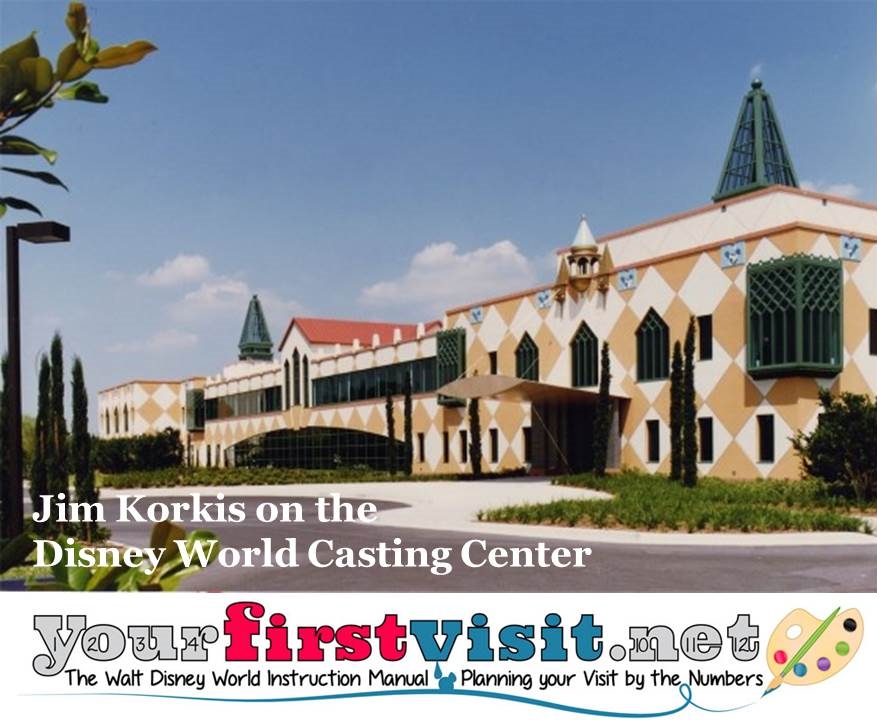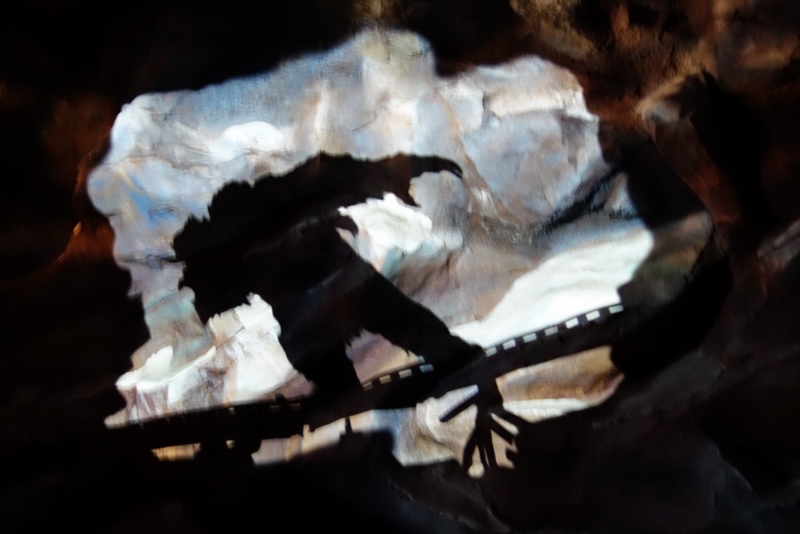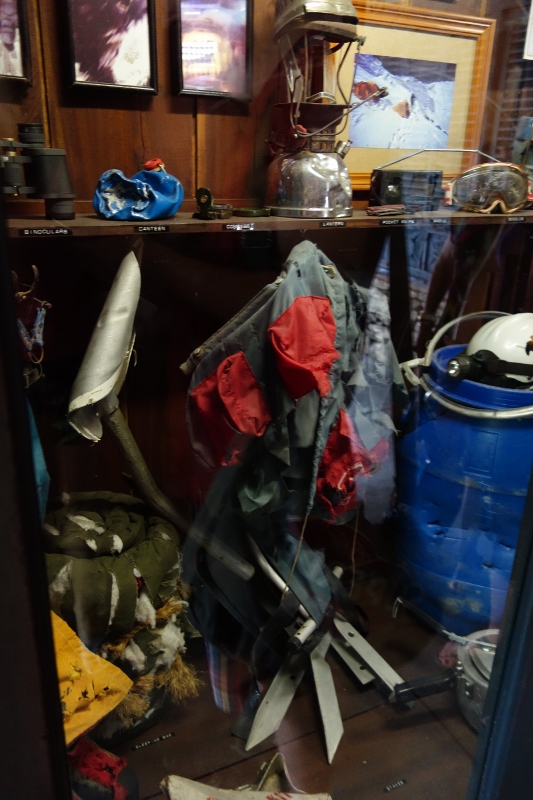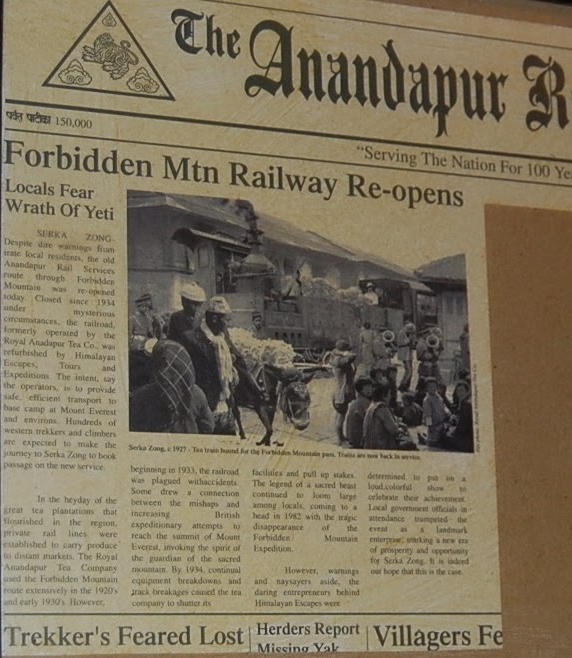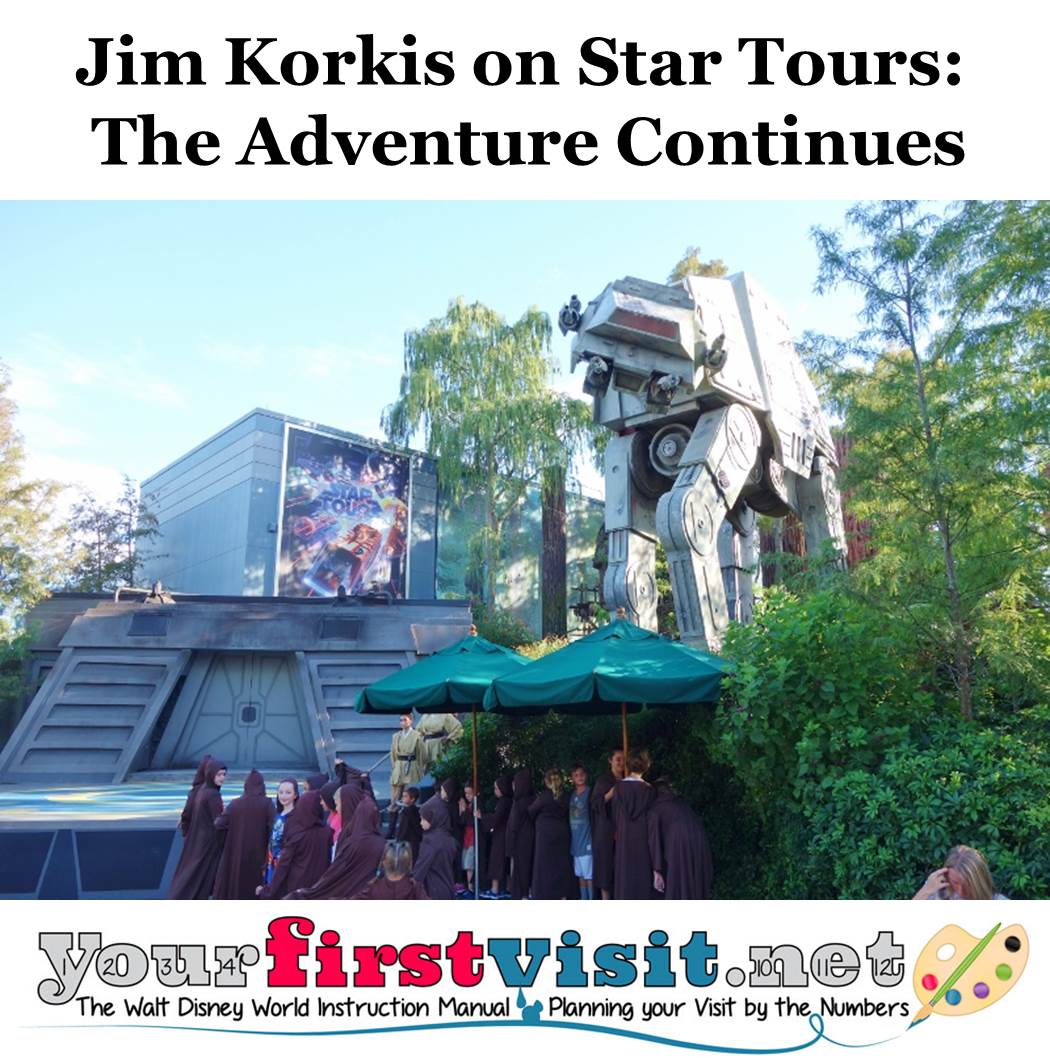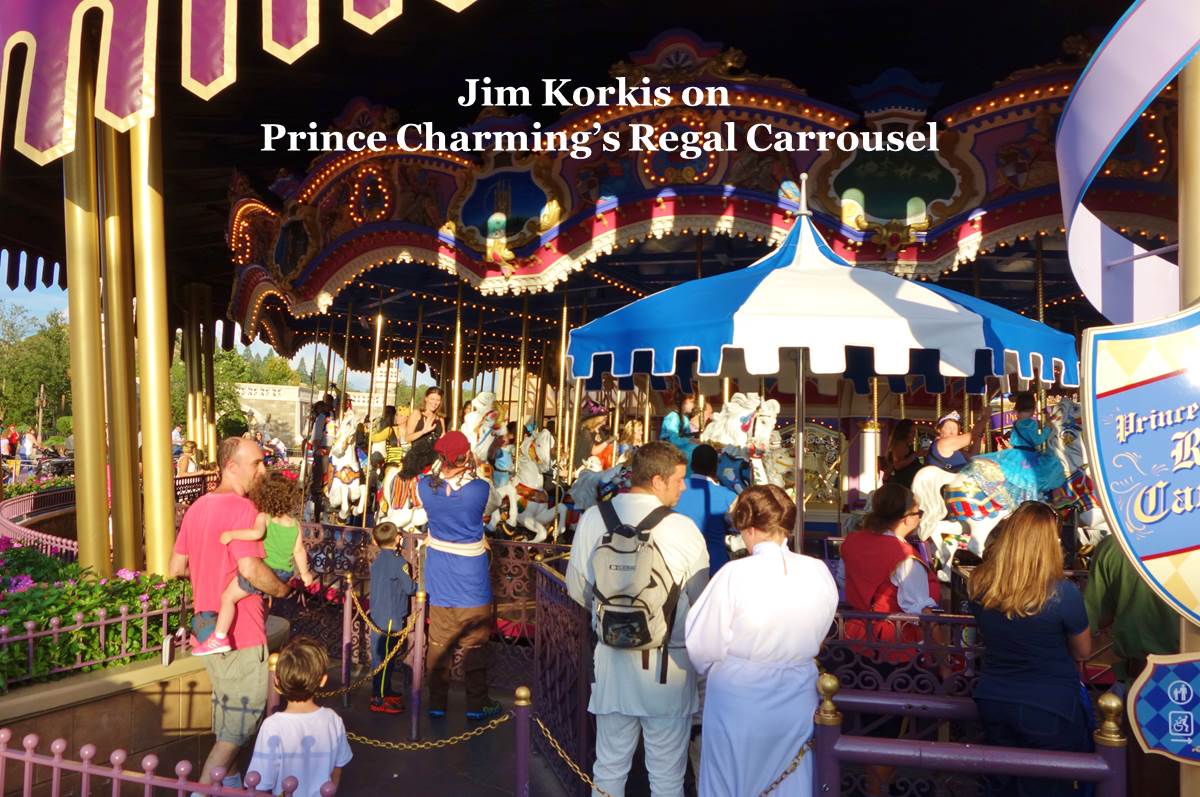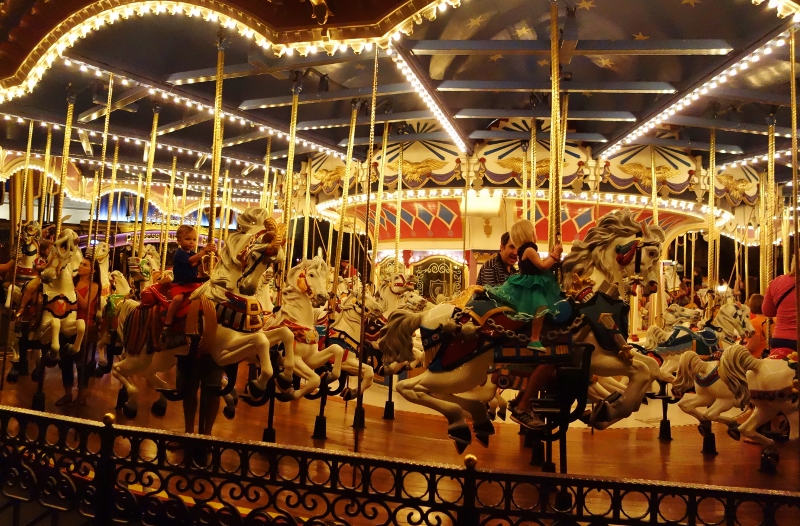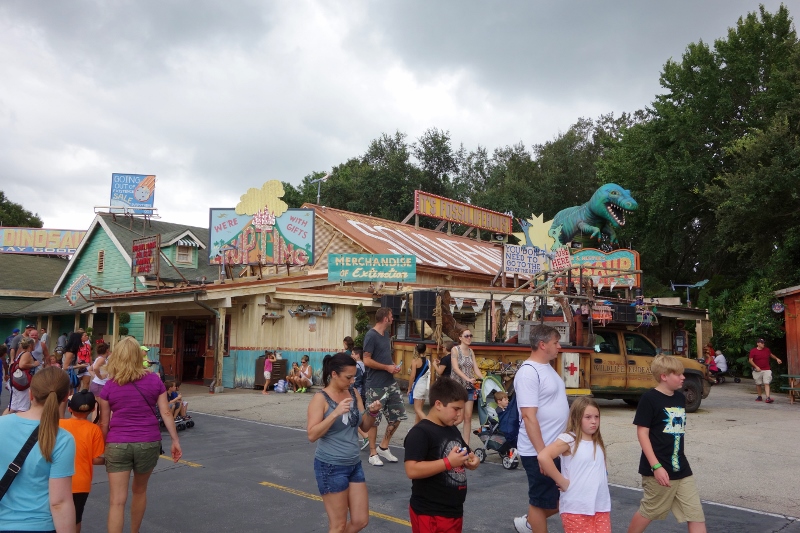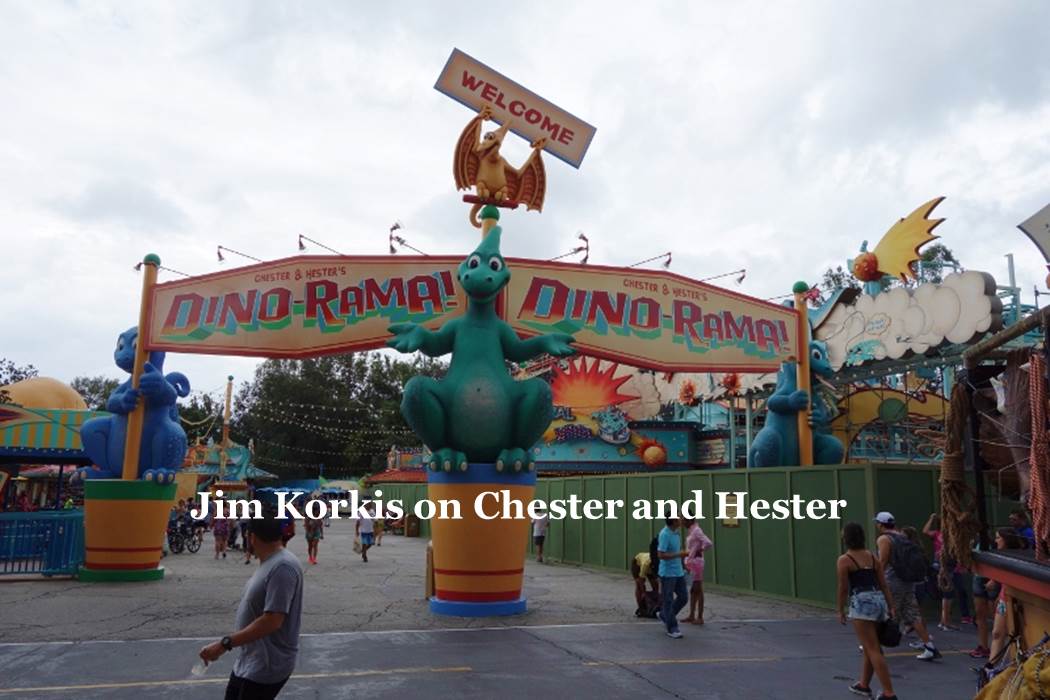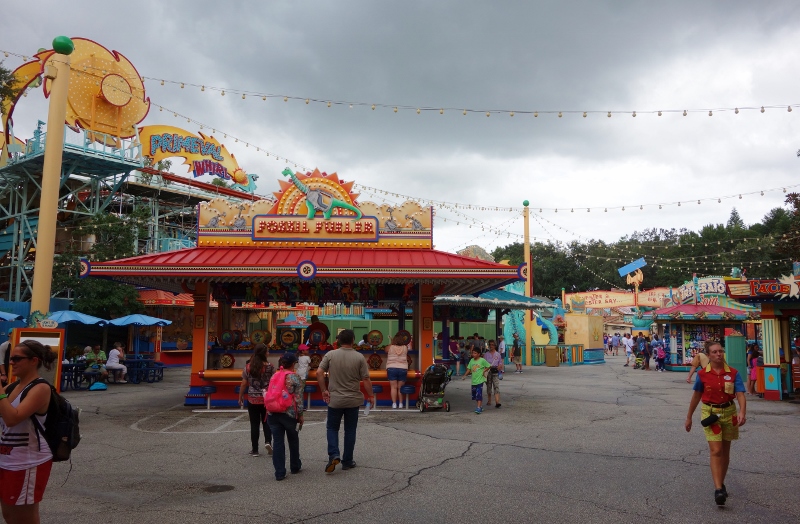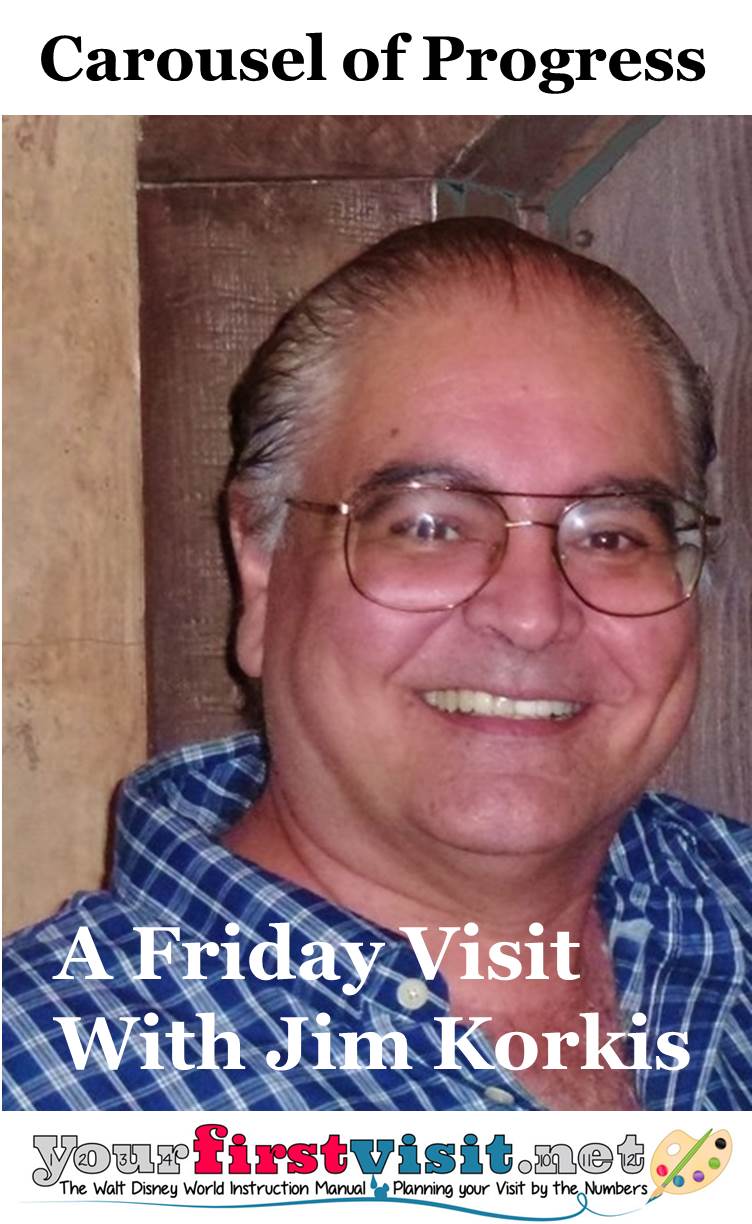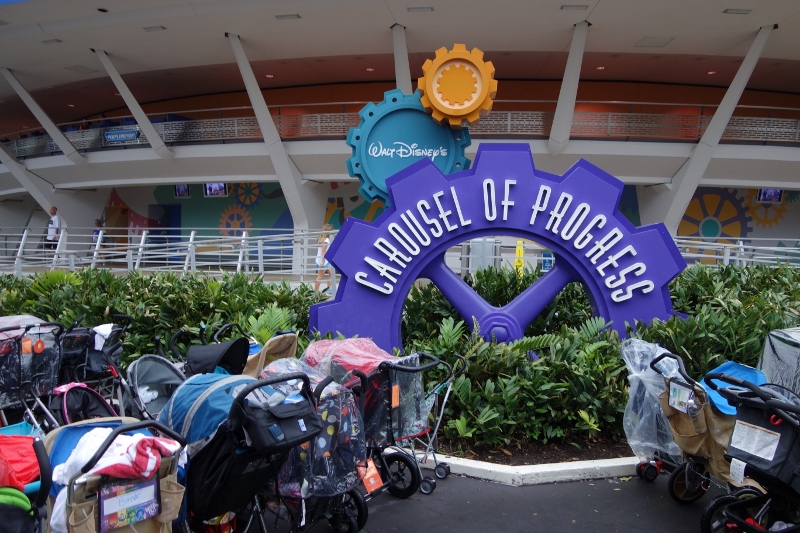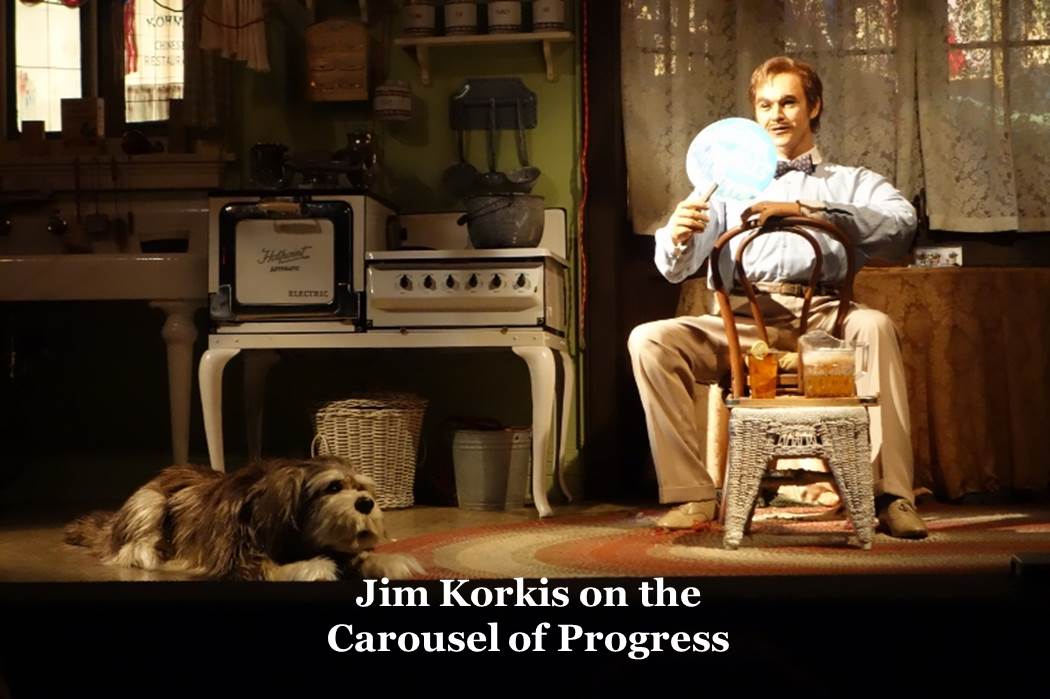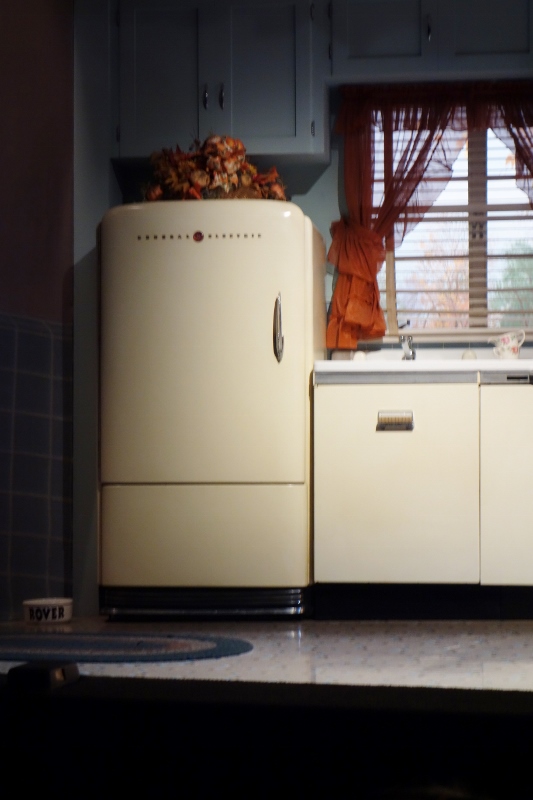Category — A Friday Visit with Jim Korkis
A Friday Visit With Jim Korkis: The Walt Disney World Casting Center
Welcome back to Fridays with Jim Korkis! Jim, the dean of Disney historians and author of Jim’s Gems in The easy Guide, writes about Walt Disney World history every Friday on yourfirstvisit.net.
THE DISNEY WORLD CASTING CENTER
By Jim Korkis
Disney World staff are known not as employees, but rather as “cast members”—a constant reminder that they are part of a “show.” And where do cast members get their start? At the Casting Center near Disney Springs.
Architect Robert A.M. Stern designed the Walt Disney World Casting Center as an interpretation of the Doge’s Palace in Venice, Italy.
He began work on the project in 1987 and the Casting Center opened in 1989.
“You have to remember that Disney is a dream world rooted in a dream view of life and of architectural history,” stated Stern.
The Casting Center faces the busy I-4 freeway taking guests to the theme parks, and acts as whimsical castle-like billboard to attract employment applicants.
The building is approximately 61,000 square feet. The entrance is right across the street from Disney Springs (formerly Downtown Disney) so that it would be easy to locate.
The diamond patterns on the outside of the building hark back to the pattern found on the Italian harlequin, as well as being exaggerated references to the same triangular pattern on the exterior of the real Doge’s Palace, that was recreated at the Italian Pavilion in World Showcase.
The canopy awning and turrets and crenellation (notches) seem to resemble the traditional Disney castles. That airplane-wing like canopy over the entrance was actually taken from concept drawings for Tomorrowland.
The Mickey Mouse head-shaped cut-outs along the top of the building serve a practical purpose. They are scuppers, so when the rain comes, the water on the room drains through them.
The bronze doorknobs are re-creations of the famous doorknob in Disney’s animated feature Alice in Wonderland. The smiling doorknob is truly a Disney character, since he does not exist in Lewis Carroll’s original story.
After entering the building, a short walk leads to a small oval rotunda surrounded by 12 gold leaf-covered statues of Disney characters on pillars just as you might find sculptures on pillars in an Italian palace.
At this point, the only way you can turn is to the left, to ascend a ramp 150 feet long.
As you walk up the ramp, there are paintings on either side that once again mimic the murals that would be found in an Italian villa. However, the paintings on the side of the building facing the real world and paralleling I-4 depict unhappiness and road hazards. Even Mickey Mouse is getting a ticket from a police officer.
The paintings on the side of the building facing Walt Disney World property and your potential future as a cast member depict the Disney characters enjoying themselves tremendously at the parks, and even a smiling Walt Disney looking out on his dream that he never lived to see finished.
In addition to these murals, there are cracks on the wall and under the bridge. During the Renaissance, newly wealthy Italian families wanted to make their estates look old and ancestral, and so utilized the effect of trompe l’oeil (“fooling the eye”) of painting cracks and stains to create the illusion of looking antique.
From a distance these cracks look amazingly real, but they are flush with the wall. This imperfection is also designed to make the applicant feel more comfortable that not every thing at Disney is completely perfect.
The vaulted ceiling and natural lighting also provides relaxation through a sense of “openness.” And looking up, applicants can see Peter Pan flying toward Neverland, or in this case, a central receiving desk to guide them to the proper location.
The Walt Disney World Casting Center is just another example of clever Disney storytelling through architecture.
* * * * *
Thanks, Jim. Stern designed multiple buildings for Disney, including the Yacht Club and Beach Club. He noted that the purpose of the design of the casting center was “to clarify Disney’s hiring process and give it an architectural dimension.”
Come back next Friday for even more from Jim Korkis!
In the meantime, check out his books, including The Vault of Walt, Who’s Afraid of the Song of the South?, and The Book of Mouse
, and his contributions to The easy Guide to Your First Walt Disney World Visit, all published by Theme Park Press.
Follow yourfirstvisit.net on Facebook or Google+ or Twitter or Pinterest!!
October 23, 2015 No Comments
A Friday Visit With Jim Korkis: The Anandapur Reporter at Expedition Everest
Welcome back to Fridays with Jim Korkis! Jim, the dean of Disney historians and author of Jim’s Gems in The easy Guide, writes about Walt Disney World history every Friday on yourfirstvisit.net.
THE ANANDAPUR REPORTER
By Jim Korkis
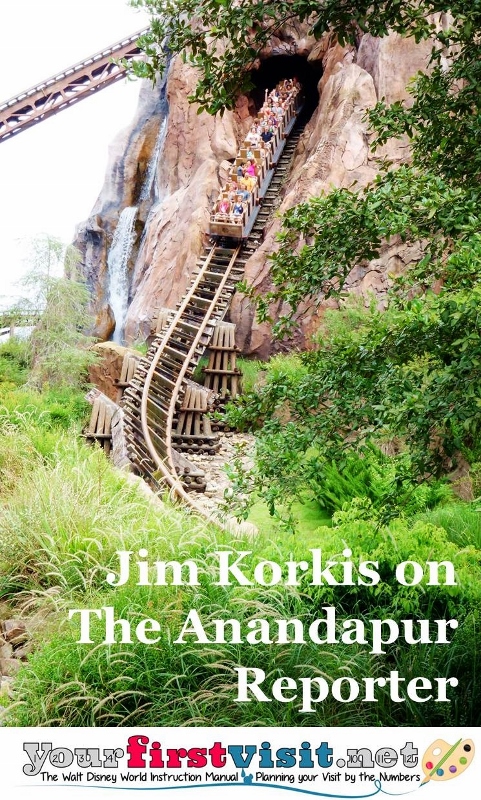
Guests move through the Himalayan Escapes Tours and Expeditions Booking Office to “obtain permits.”
The Himalayan Escapes Tours and Expeditions company organizes a number of different tours and expeditions with “Expedition Everest” being the name of just one of their specific tours.
Himalayan Escapes is operated by a native Anandapuri, Norbu, and his business partner, a British entrepreneur named Bob.
They operate out of a building that had previously been used as the headquarters of the Royal Anandapur Tea Company. They have refurbished a steam train that had been used by the tea company to bring harvested tea leaves down the mountains.
This train now takes customers to the base camp using a shortcut through the Forbidden Mountain that is supposedly the location of a mysterious environmental guardian referred to as the Yeti…
Norbu and Bob’s office is filled with dozens of small details, from a map of the Himalayas to a tour board depicting the status of the various expeditions.
In fact, there are so many details in the various buildings leading to the attraction vehicles that guests are unable to see all of them—they may miss a yellowed newspaper clipping from The Anandapur Reporter “Serving the Nation for 100 Years.”
While some headlines like “Trekkers Feared Lost” and “Herders Report Missing Yak” are missing their full stories, the lead feature story is complete:
“Forbidden Mountain Railway Re-opens
Locals Fear Wrath of Yeti
“SERKA ZONG—Despite dire warning from irate local residents, the old Anandapur Rail Services route through Forbidden Mountain was reopened today. Closed since 1934 under mysterious circumstances, the railroad, formerly operated by the Royal Anandapur Tea Co. was refurbished by Himalayan Escapes Tours and Expeditions.
“The intent, say the operators, is to provide safe, efficient transport to base camp at Mount Everest and environs. Hundreds of western trekkers and climbers are expected to make the journey to Serka Zong to book passage on the new service.
“In the heyday of the great tea plantations that flourished in the region, private rail lines were established to carry produce to distant markets. The Royal Anandapur Tea Company used the Forbidden Mountain route extensively in the 1920s and early 1930s. However, beginning in 1933, the railroad was plagued with accidents. Some drew a connection between the mishaps and increasing British expeditionary attempts to reach the summit of Mount Everest, invoking the spirit of the guardian of the sacred mountain.
“By 1934, continual equipment breakdowns and track breakages caused the tea company to shutter its facilities and pull up stakes. The legend of a sacred beast continued to loom large among locals, coming to a head in 1982 with the tragic disappearance of the Forbidden Mountain Expedition.
“However, warnings and naysayers aside, the daring entrepreneurs behind Himalayan Escapes were determined to put on a loud, colorful show to celebrate their achievement. Local government officials in attendance trumpeted the event as a landmark enterprise, marking a new era of prosperity and opportunity for Serka Zong. It is indeed our hope that this is the case.”
Near the end of the Yeti Museum, before guests board the train, two notices hang on the wall. One is written by the museum’s curator Professor Pumba Dorjay warning against the railroad expedition and another by Norbu and Bob stating that the curator’s notice “does not represent the opinions or views” of the company.
* * * * *
Thanks, Jim. Come back next Friday for even more from Jim Korkis!
In the meantime, check out his books, including The Vault of Walt, Who’s Afraid of the Song of the South?, and The Book of Mouse
, and his contributions to The easy Guide to Your First Walt Disney World Visit, all published by Theme Park Press.
Follow yourfirstvisit.net on Facebook or Google+ or Twitter or Pinterest!!
October 16, 2015 No Comments
A Friday Visit With Jim Korkis: Star Tours
Welcome back to Fridays with Jim Korkis! Jim, the dean of Disney historians and author of Jim’s Gems in The easy Guide, writes about Walt Disney World history every Friday on yourfirstvisit.net.
STAR TOURS: THE ADVENTURE CONTINUES
By Jim Korkis
Star Tours: The Adventures Continue debuted at Walt Disney World in 2011 and features a different storyline than its previous incarnation, Star Tours, which was in place from 1989 to 2010.
According to the Disney publicity release:
“It has been a long time since the end of the Clone Wars, and the evil Sith Lord Darth Vader continues to tighten his grip on the Empire as the galaxy moves closer to the brink of a great civil war.
“A new intergalactic spaceline, Star Tours, seeks to preserve unrestricted intergalactic travel in this age of tyranny. Freedom fighter Captain Raymus Antilles has assigned two droids, C-3P0 and R2-D2, to help launch the spaceline, fueling Imperial suspicion that Star Tours is part of the Rebel Alliance.
“Star Tours is about to open its first intergalactic space terminal in the Earth System as rumors of a fearsome weapon of mass destruction dash all hope for peace and freedom in the galaxy…”
Depending upon which of the possible visual combinations are randomly selected during the flight, guests get to visit the ice planet of Hoth, Tatooine for a podrace, Kashyyyk (the home planet of the Wookiees — including this was a suggestion of John Lasseter), Naboo, Coruscant or the Death Star above the planet Geonosis.
However, sharp-eyed Disney fans or Star Wars fans may catch a quick glimpse of some possible destinations that were abandoned or may give an indication of possible future adventures.
During the launch sequence, guests can see other Starspeeders painted with different color schemes and logos than the one they are on, with an Aurebesh letter emblazoned on the side of each of them.
Just like the airports we are familiar with today, this busy spaceport has other spacelines using the facilities and going to other destinations. Despite the rise of the galactic Empire, interstellar travel is still a thriving industry. Different tour companies, like Star Tours, carry tourists to the distant corners of the galaxy for exotic vacations.
Those other Starspeeder 1000s are:
- Dantooine Express: White with a brown diagonal at the rear with the letter “dora”. Dantooine Express provides tours of the grasslands, rivers and lakes on Dantooine, located in the Raioballo sector of the Outer Rim and far removed from most galactic traffic. On the tour, visitors see native wildlife, including the kath hound, the iriaz, the kinrath, and the graul.
- Tatooine Transit: Solid blue with a white letter “nern”. Tatooine Transit provides tours of the planet Tatooine in the Outer Rim Territories. This dangerous area is controlled by the Hutts, but travelers can still visit popular sites such as Mos Espa, The Dune Sea, moisture farms and even the infamous Mos Eisley Cantina.
- Bespin Direct: White with a brownish top with white letters outlined in red “wesk,” “dora,” “isk”. Bespin Direct offers tours of the gas planet in the Bespin system, located in the Outer Rim Territories. Tours include the refinery production facilities of the tibanna gas mines and the famous floating Cloud City luxury resort.
- Naboo Spacelines: Gold with a brown circle at the back with a white “nern”. Naboo Spacelines travels to Naboo near the Outer Rim territories. It is a largely unspoiled world with large plains, swamps, and seas. Tours include a visit to the capital city of Theed or the underwater Gungan city of Otoh Gunga.
- Air Alderaan: White with a brown “aurek” letter at the back. Air Alderaan offers tours of the second planet in the Alderaan system. This planet is considered the “Shining Star” of the Core Worlds. Wild grasslands, old mountain ranges and large oceans dominate the planet’s land surface. One of the highlights of the tour is a visit to the capital city of Aldera.
* * * * *
Thanks, Jim. I’ve got a little more on Star Tours: The Adventure Continues here.
Moreover, as Josh and I note in our book, Disney is expected to add new scenes from Episode VII: The Force Awakens in late 2015.
And come back next Friday for even more from Jim Korkis!
In the meantime, check out his books, including The Vault of Walt, Who’s Afraid of the Song of the South?, and The Book of Mouse
, and his contributions to The easy Guide to Your First Walt Disney World Visit, all published by Theme Park Press.
Follow yourfirstvisit.net on Facebook or Google+ or Twitter or Pinterest!!
October 9, 2015 No Comments
A Friday Visit With Jim Korkis: Prince Charming Regal Carrousel
Welcome back to Fridays with Jim Korkis! Jim, the dean of Disney historians and author of Jim’s Gems in The easy Guide, writes about Walt Disney World history every Friday on yourfirstvisit.net.
PRINCE CHARMING REGAL CARROUSEL
By Jim Korkis
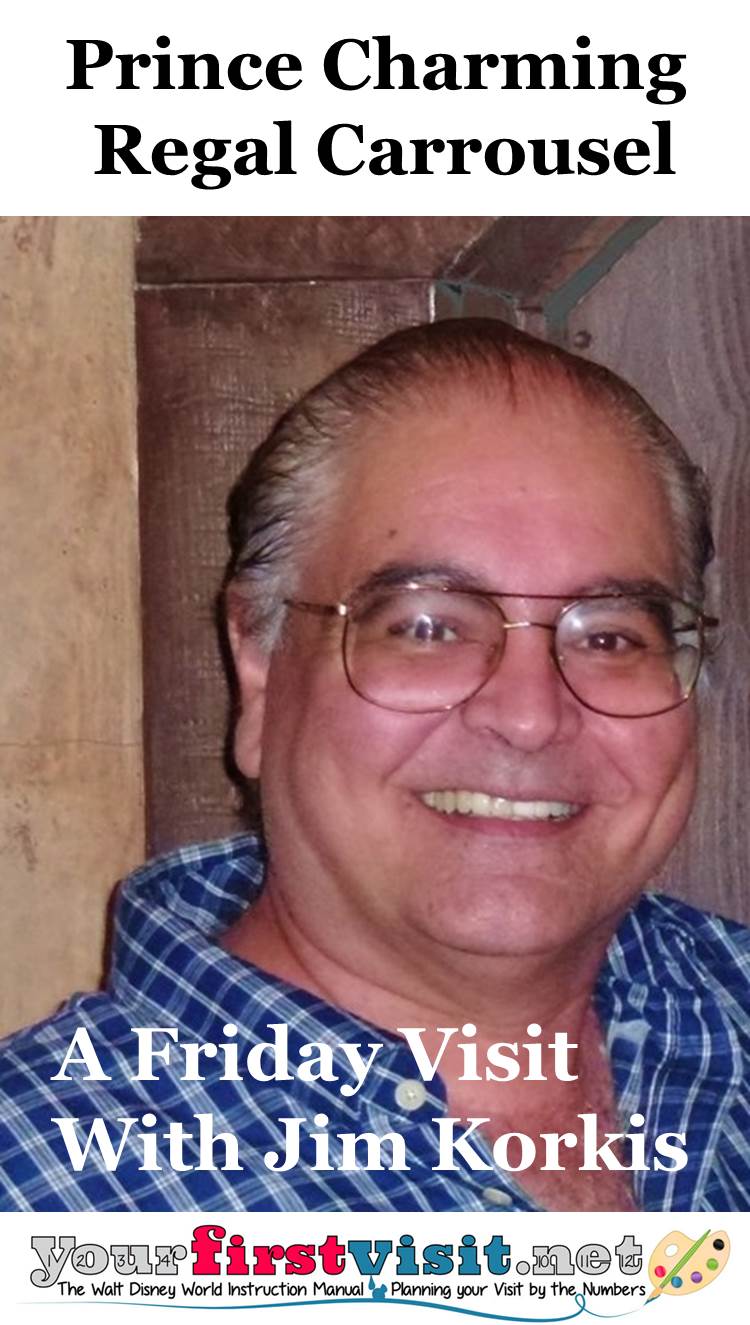
It was carved by German and Italian carvers to express the patriotism that was prevalent in the United States after the First World War. The carousel was named “Liberty”, and was one of the largest carousels ever built, being some sixty feet in diameter.
The first home of the Liberty Carousel was at the Detroit Palace Garden Park, where it stayed until it was rehabilitated in Philadelphia in 1928 and set up in Olympic Park in Maplewood, N.J., for the next 39 years.
The Liberty Carousel originally had 72 horses and also two chariots (not four, as is reported in some articles). The distinctly American horses were black, brown, gray, and white.
Their saddles included items that celebrated the American frontier. Carved figures of Lady Liberty holding shields that featured a red, white and blue flag emblem decorated the interior top circle.
The carousel included eighteen landscape paintings of American scenery. Just below them was a running board decorated with golden American eagles. Sadly, over the years, less skilled craftsmen would slop paint and lacquer over the horses, eventually obscuring the intricate and uniquely engraved features underneath.
The Philadelphia Toboggan Company built 89 carousels before 1929 and the Great Depression. The Liberty Carousel was No. 46, and is one of only a dozen or so of those classic originals from the company that still exist and operate today.
Olympic Park closed in 1965. By that point, the Liberty Carousel had fallen into a state of disrepair and was slated for almost-certain demolition. Antique carousel horses are in such demand that it was planned to sell them and the decorations off individually.
By 1967, Disney had located and acquired the antique masterpiece for the Magic Kingdom.
All of the horses were shipped to Disney shops, where craftsmen were surprised by the detail and artistic grace uncovered when all the years of paint and grime was removed down to the gleaming maple of the horses. Months of Disney artistry went into the rehabilitation.
The chariots were removed, and the carousel was filled out to 90 horses when Disney purchased some antique horses that were made by two other well-known producers of carousels: the Dentzel Company and the Parker Company.
The horses were sanded down carefully to the original wood so that no detail was lost. Sanding down to the actual wood could have resulted in damage and loss of detail, so, today, they are only sanded down to roughly the level of primer and no further. Then the horses were primed and painted white.
The horses are white for two reasons. First, since it was Cinderella’s carousel, the white horses allude to the white horses that pulled Cinderella’s pumpkin coach. Second, one of the things Disney discovered with the King Arthur’s Carrousel at Disneyland (the two “r”s in the title of the ride is correct) was that when people rode a carousel, they first tried to get on a white horse because it was considered the “hero” horse.
For its first decade or so of operation, the Disneyland carousel featured horses of different colors until Imagineer John Hench made the decision to make them all Arctic white. Every guest no matter what their size gets a chance to ride a “hero” horse.
In 1997, one of the original Liberty Carousel chariots was located in a Disney warehouse, and was rehabbed and reinstalled on the ride. For decades, the attraction was named Cinderella’s Golden Carrousel, but was renamed Prince Charming Regal Carrousel in 2010.
* * * * *
Thanks, Jim. And come back next Friday for even more from Jim Korkis!
And in case you are wondering, yes, it’s “Carrousel” in Fantasyland and “Carousel” in Tomorrowland!
In the meantime, check out his books, including The Vault of Walt, Who’s Afraid of the Song of the South?, and The Book of Mouse
, and his contributions to The easy Guide to Your First Walt Disney World Visit, all published by Theme Park Press.
Follow yourfirstvisit.net on Facebook or Google+ or Twitter or Pinterest!!
October 2, 2015 No Comments
A Friday Visit With Jim Korkis: Chester and Hester
Welcome back to Fridays with Jim Korkis! Jim, the dean of Disney historians and author of Jim’s Gems in The easy Guide, writes about Walt Disney World history every Friday on yourfirstvisit.net.
THE CHESTER AND HESTER STORY

Perhaps one of the most misunderstood stories at the Disney World theme parks is the theme behind Chester and Hester and their dinosaur store and amusement venue in DinoLand at Disney’s Animal Kingdom.
Here’s the backstory of this unique land, where a beaten-up looking parking lot is actually a key part of the theme!
In the 1940s, Diggs County, which later became the home of the Dino Institute, was a quiet rural location with just a few cabins and a fishing lodge. Newly married Chester and Hester, who grew up in the area, decided to open a business since they reasoned that there would be an influx of traffic with Route 498 (from April ’98– the opening date of Disney’s Animal Kingdom) becoming part of the fabled Route 66.
They put their life savings into building a service station. Since they were the only stop for gasoline for miles, they had made a wise investment. However, in 1947, amateur paleontologists discovered a fossil and it was speculated that the area might be rife with even more fossils of scientific interest.
These researchers bought the fishing lodge and turned it into the first Dino Institute. (Eventually, the project grew so large they moved into a new institute building in April 1978 and now the fishing lodge is inhabited by college students who use it both as a dormitory and a commissary.)
Chester and Hester even found some fossils themselves after digging in their backyard and sold them to passing tourists. It proved so popular that the couple began selling more and more dinosaur related souvenirs and found they made more money from that endeavor with less effort than selling gas. So the establishment evolved into Chester & Hester’s Dinosaur Treasures.
However, the couple didn’t have enough money to start over fresh so they repainted over many of the things from the gas station. They still have cans of oil, fan belts and other automotive supplies that they continue to sell as well.
One photo of the couple that is in the shop suggests to sharp-eyed guests that the two look almost exactly alike as if the same person posed for both characters.
The Dino Institute discovered time travel and there was a huge flood of people coming to participate. Chester and Hester took over the cracked parking lot across the street and turned it into the kind of small roadside attraction popular in the old days.
Classic roadside attractions featured statues, mini-museums, quirky architecture, gimmicky signage, unique exhibits, carnival-style attractions, and more, designed to separate a curious tourist from the money in his wallet as he traveled along America’s roadways. Many of those attractions included massive cement dinosaurs.
Chester & Hester’s Dino-Rama proclaimed that it showed “Dinosaurs the way they were meant to be: big, green and fun” (although some are orange…).
Of course, money was tight for such a major investment so they had to purchase “off the shelf” amusement rides and carnival games that were re-themed to dinosaurs. These are not rides of distinction, but rather “rides of extinction” as one highly colorful sign states.
To compete with the Dino Institute’s technological achievement, Chester & Hester offered guests a trip on Primeval Whirl which, like the ride DINOSAUR, sends guests back in time and has them confronting an asteroid at the end.
The name of this “wild mouse”-style ride is an homage to the Primeval World, Ford’s 1964 New York World’s Fair attraction designed by Disney that featured a glimpse at audio-animatronics dinosaurs which was later installed as the grand finale of the Disneyland Railroad.
* * * * *
Thanks, Jim. And come back next Friday for even more from Jim Korkis!
In the meantime, check out his books, including The Vault of Walt, Who’s Afraid of the Song of the South?, and The Book of Mouse
, and his contributions to The easy Guide to Your First Walt Disney World Visit, all published by Theme Park Press.
Follow yourfirstvisit.net on Facebook or Google+ or Twitter or Pinterest!!
September 25, 2015 No Comments
A Friday Visit With Jim Korkis: Walt Disney’s Carousel of Progress
Welcome back to Fridays with Jim Korkis! Jim, the dean of Disney historians and author of Jim’s Gems in The easy Guide, writes about Walt Disney World history every Friday on yourfirstvisit.net.
THE CAROUSEL OF PROGRESS
By Jim Korkis
Years before Disney World even opened, Walt Disney tried to convince General Electric to sponsor a new addition to Disneyland called Edison Square.
In one of the Edison Square buildings would be a show in four scenes that would have followed the story of a family over the decades as their life was constantly being improved by new gadgets made by G.E.
The concept evolved into a theater where the audience sat in seats that revolved around the different stages. That attraction debuted at the 1964 New York World’s Fair as The Carousel of Progress. It was so popular that after the fair it was relocated to Disneyland.
Over thirty-one million guests experienced that version of the attraction at Disneyland from July 2, 1967 to September 9, 1973.
With the opening of the Magic Kingdom in Florida in October 1971, General Electric saw the opportunity to reach a new audience. Surveys had shown that only eight percent of the guests visiting Disneyland came from east of the Mississippi.
So, the still popular Carousel of Progress closed and was relocated to Walt Disney World.
The Carousel of Progress opened in Tomorrowland in Walt Disney World on January 15, 1975 along with another attraction, Space Mountain, as part of the original Phase Two plan for the vacation destination where new things were to continue to be added between 1971 and 1975.
Extensive changes were made to the attraction, from the elimination of the Kaleidophonic Screens in the prologue and epilogue to the removal of the second floor model of Progress City—an early Epcot concept.
The theater no longer rotated clockwise since there was no reason to position guests to go up a speed ramp to see the Epcot model on the upper floor. Now the theater rotated counter-clockwise, with the exit being right next to the entrance.
There had been a change in leadership at General Electric and the new powers-that-be felt that the iconic Sherman Brothers song There’s A Great Big Beautiful Tomorrow was implying that G.E. customers should wait to purchase products because new and better things were coming just around the corner.
The Sherman Brothers composed a new song, The Best Time of Your Life, often mistakenly referred to by its opening lyric “Now is the Time. Now is the Best Time.” Now was the best time to buy products from General Electric instead of waiting for the beautiful tomorrow.
Not only was there a new theme song that was repeated throughout the show but the final scene was updated to showcase the 1970s, and a new voice cast recorded dialog for the entire show. Other minor changes were made as well.
The final scene was once again updated in 1981 to showcase the future of the 1980s. Early in 1985, General Electric decided not to renew its contract for the show, especially since it was sponsoring a similar show at the newly opened Epcot entitled Horizons that included some references to the carousel show.
So the Disney Company once again updated the show, removing General Electric references (although the Hotpoint oven in Scene Two and the G.E. refrigerator in Scene Three remained).
Finally, in 1993, the entire attraction was once again rewritten and re-recorded with another new voice cast and re-named Walt Disney’s Carousel of Progress. The original theme song returned to the show. It is now supposed to be a museum of earth technology in the space port of the future to entertain travelers as they wait for their flights.
Over the decades, this show has changed more than any other Disney attraction. Some of those changes have been relatively minor such as changing Orville from a cousin to an uncle, while others have been significantly more major including reformatting the scenes to reflect different seasons of the year.
* * * * *
Thanks, Jim. I never knew before the theory behind why the Carousel is in Tomorrowland! And come back next Friday for even more from Jim Korkis!
In the meantime, check out his books, including The Vault of Walt, Who’s Afraid of the Song of the South?, and The Book of Mouse
, and his contributions to The easy Guide to Your First Walt Disney World Visit, all published by Theme Park Press.
Follow yourfirstvisit.net on Facebook or Google+ or Twitter or Pinterest!!
September 18, 2015 2 Comments

